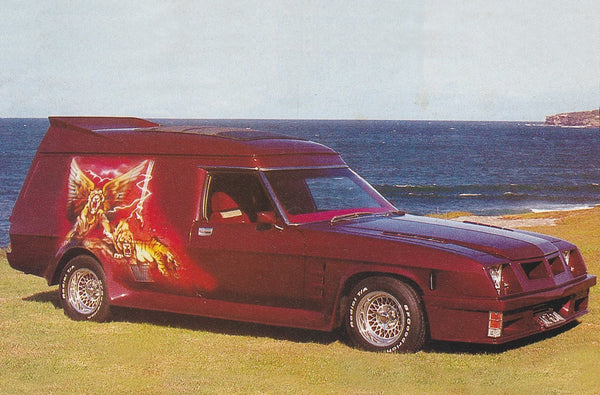
Why 90s tuner cars are no more gaudy than any other era of modified cars
MOOG's new car (seen HERE) caused a lot of people to question the drugs car-builders were taking during the 1990s and early 2000s. However, this era of "show cars" is, arguably, no different to fads that previous generations went through as well.

Thumping subs rattling brains (check MOOG's out HERE), gaudy paint work, crazy body kit modifications and questionably engineered mechanical upgrades - these are pretty much the foundation for any generation of show car, as these types of cars have always aimed to bring in attention from the wider public.
While many of us remember the Auto Salon era because we lived through it (I worked on their magazine so I definitely can't forget!) the reality is every generation has a car styling fad that grows out of a niche and into a ludicrous, over-the-top, gaudy scene.

Pick an era of modified car and there will come a point, probably 12 months before the style stopped being "on-trend" where the scene peaked in its craziness and how wild the cars got. Hot rods were born on the dry lakes and salt flats of the 1930s, '40s and '50s, but as city-based hot rod shows increased in popularity more people started building finer and finer-detailed machines that no longer put raw speed at the forefront of their intent.
By the 1960s many of these "show rods" had almost become caricatures of the very hot rods they were meant to be based off. Ed Roth, the man who gave us Rat Fink and that whole genre of hot rod art, built many of these super-wild machines - like the Mysterion below.

Back in the late 1970s Australia was overtaken by the panel van craze. For our International friends these high-roofed commercial vehicles are normally based around a ute but have access from the front seats. Used by apprentices they quickly became popular surfing rigs, and for more nocturnal pursuits.

Soon people were painting them wild colours, with murals and crazy trim jobs (with full crushed velvet, bar fridges, water beds and more!), while body mods saw aftermarket front-ends, high-wings, side-pipes, and more added on... are you starting to sense a common theme here?
These show vans often ended up with massively chromed undercarriages and they were no longer fit for being used to haul timber or drive down dirt roads to quiet surfing spots. They grew their own identities, like "Alley Cat", "Stormbringer", and far ruder names we can't publish here.

Both these Valiant (ie: Chrysler Australia, or Mopar) vans are modern builds designed to evoke that classic era. You can read more about Simo's red van "Disturbia" HERE... The pic below is by Chris Thorogood - thanks for letting me borrow it, Tappy!)
 By 1981 the panel van craze had given way to the street machine scene, which is very similar to the American muscle car scene of the 1980s. Mick Curren's "Terminator" Holden Monaro below is probably what most Aussies think of when someone says "street machine".
By 1981 the panel van craze had given way to the street machine scene, which is very similar to the American muscle car scene of the 1980s. Mick Curren's "Terminator" Holden Monaro below is probably what most Aussies think of when someone says "street machine".

Even the drag-inspired Pro Street scene of the late 1980s ended up being pushed to ludicrous levels (see below) which drove trends to milder looking cars - and this is exactly what happened with the Auto Salon scene as show cars gave way to more useable, faster and milder-looking JDM styling trends.

Before the Pro Street movement there were "Street Freaks", which are often mistaken for gassers (a popular drag car class from the 1960s). Street Freaks were an American invention and never got to Australia, but the intention was to have massive visual impact rather than brain-bending quarter-mile times.
So, before throwing stones at the Auto Salon/Max Power/HIN crew for being heavy on the visuals over everything else, just remember this kind of modding has been happening for decades...





